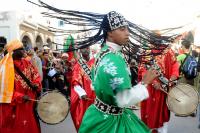 For four days last month, tens of thousands of fans from around the world descended on Essaouira, Morocco, for an African musical extravaganza: the annual festival Gnaoua et Musiques du Monde, now in its 14th edition. The protagonist of this musical feast was as usual Gnawa music: when to Gnawa masters like Mustapha Baqbou, Mohammed Guinea, and Hassan Boussou were not on the main public stages, they were performing lilas (night of healing) that began at midnight at different riads (traditional style Moorish house with a courtyard); and that is where true European aficionados went to trance and to learn the specifics of daqa marrakchiya (the percussive clap associated with the city of Marrakesh).
For four days last month, tens of thousands of fans from around the world descended on Essaouira, Morocco, for an African musical extravaganza: the annual festival Gnaoua et Musiques du Monde, now in its 14th edition. The protagonist of this musical feast was as usual Gnawa music: when to Gnawa masters like Mustapha Baqbou, Mohammed Guinea, and Hassan Boussou were not on the main public stages, they were performing lilas (night of healing) that began at midnight at different riads (traditional style Moorish house with a courtyard); and that is where true European aficionados went to trance and to learn the specifics of daqa marrakchiya (the percussive clap associated with the city of Marrakesh).
I'll visit
22.07.2011 | by Jorge de La Barre
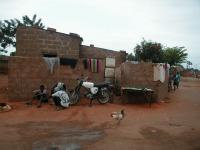 Around the competition A House in Luanda: Patio and Pavilion, let’s talk about houses and let’s talk about Luanda. Intending, with all this talk, to add a few considerations to the debate driven by the Lisbon Architecture Triennale, in association with the Luanda Triennale, on the role architects could play in the solution to the urban and housing problem of this city with explosive growth, to the increasing socio-territorial inequalities. Let’s talk about houses through an analysis of some of the ideas presented in the competition to which we’ll add others around the problems highlighted on a brief analysis of life in “Luanda’s perimeter”, the place proposed by the competition.
Around the competition A House in Luanda: Patio and Pavilion, let’s talk about houses and let’s talk about Luanda. Intending, with all this talk, to add a few considerations to the debate driven by the Lisbon Architecture Triennale, in association with the Luanda Triennale, on the role architects could play in the solution to the urban and housing problem of this city with explosive growth, to the increasing socio-territorial inequalities. Let’s talk about houses through an analysis of some of the ideas presented in the competition to which we’ll add others around the problems highlighted on a brief analysis of life in “Luanda’s perimeter”, the place proposed by the competition.
City
18.07.2011 | by Cristina Salvador
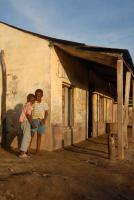 In your text, treat Africa as if it were one country. It is hot and dusty with rolling grasslands and huge herds of animals and tall, thin people who are starving. Or it is hot and steamy with very short people who eat primates. Don’t get bogged down with precise descriptions. Africa is big: fifty-four countries, 900 million people who are too busy starving and dying and warring and emigrating to read your book. The continent is full of deserts, jungles, highlands, savannahs and many other things, but your reader doesn’t care about all that, so keep your descriptions romantic and evocative and unparticular.
In your text, treat Africa as if it were one country. It is hot and dusty with rolling grasslands and huge herds of animals and tall, thin people who are starving. Or it is hot and steamy with very short people who eat primates. Don’t get bogged down with precise descriptions. Africa is big: fifty-four countries, 900 million people who are too busy starving and dying and warring and emigrating to read your book. The continent is full of deserts, jungles, highlands, savannahs and many other things, but your reader doesn’t care about all that, so keep your descriptions romantic and evocative and unparticular.
Mukanda
15.07.2011 | by Binyavanga Wainaina
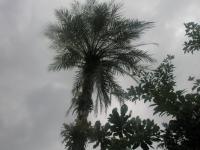 Although most of the moral economy theorists discussed so far are critics of historical capitalism, few of them are Marxists. Indeed, whether stressing market rationalism or communal norms, they refuse (often explicitly) to discuss peasant society in class terms (see especially Magagna, forthcoming). Marxist analyses of the peasantry, along with "peasant studies" in general may indeed be out of fashion (Roseberry 1989); nonetheless it is Marxists who continue to search for the cultural components of Third World responses to capitalism-- including witchcraft beliefs. The results may be problematic, but they nonetheless point to paths of inquiry not opened by the individualist and functionalist approaches of other moral economy theories.
Although most of the moral economy theorists discussed so far are critics of historical capitalism, few of them are Marxists. Indeed, whether stressing market rationalism or communal norms, they refuse (often explicitly) to discuss peasant society in class terms (see especially Magagna, forthcoming). Marxist analyses of the peasantry, along with "peasant studies" in general may indeed be out of fashion (Roseberry 1989); nonetheless it is Marxists who continue to search for the cultural components of Third World responses to capitalism-- including witchcraft beliefs. The results may be problematic, but they nonetheless point to paths of inquiry not opened by the individualist and functionalist approaches of other moral economy theories.
To read
11.07.2011 | by Ralph A. Austen
 Communities are above any kind of suspicion; they are incorruptible and have an unfailing vision for the future of humanity. At least that is how some missionaries for the new religion called ‘development’ think. The trope of civil associations serves to illustrate this sanctified sanctifying concept. This pure thing does not exist. Thankfully. What there are human things, with the faults and virtues of all human things.
Communities are above any kind of suspicion; they are incorruptible and have an unfailing vision for the future of humanity. At least that is how some missionaries for the new religion called ‘development’ think. The trope of civil associations serves to illustrate this sanctified sanctifying concept. This pure thing does not exist. Thankfully. What there are human things, with the faults and virtues of all human things.
Mukanda
04.07.2011 | by Mia Couto
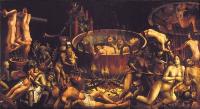 The central trope of the various efforts to define moral economy has been an opposition between, on the one hand, the maximizing individual and ever-expanding market of classical political economy, and on the other a community governed by norms of collective survival and believing in a zero-sum universe: i.e. a world where all profit is gained at someone else's loss. The communal/zero-sum side of this equation is broadly consistent with African beliefs identifying capitalism and witchcraft as the dangerous appropriation of limited reproductive resources by selfish individuals.
The central trope of the various efforts to define moral economy has been an opposition between, on the one hand, the maximizing individual and ever-expanding market of classical political economy, and on the other a community governed by norms of collective survival and believing in a zero-sum universe: i.e. a world where all profit is gained at someone else's loss. The communal/zero-sum side of this equation is broadly consistent with African beliefs identifying capitalism and witchcraft as the dangerous appropriation of limited reproductive resources by selfish individuals.
To read
21.06.2011 | by Ralph A. Austen
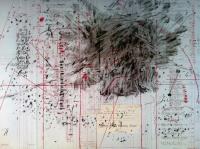 If any African artist working today can be described as internationally acclaimed, instantly recognizable, with a style marked by a unique personality, it is the South African William Kentridge. A ubiquitous presence in art festivals and exhibitions and in the permanent collections of the great museums, a recipient of numerous prizes, encomia, and honorary doctorates, Kentridge was born in Johannesburg in 1955, when popular uprisings and increasingly harsh repression drew clear lines between partisans and opponents of the racist authoritarian regime.
If any African artist working today can be described as internationally acclaimed, instantly recognizable, with a style marked by a unique personality, it is the South African William Kentridge. A ubiquitous presence in art festivals and exhibitions and in the permanent collections of the great museums, a recipient of numerous prizes, encomia, and honorary doctorates, Kentridge was born in Johannesburg in 1955, when popular uprisings and increasingly harsh repression drew clear lines between partisans and opponents of the racist authoritarian regime.
I'll visit
21.06.2011 | by Beatriz Leal Riesco
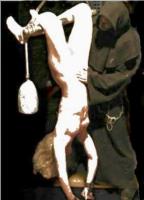 Witchcraft, as used here, is also an abstraction, but one intended to represent directly the terms used by African and other societies to describe their own beliefs and practices. The introductory section of the essay will attempt to identify an African witchcraft idiom which gives broader meaning to texts such as the Beninois oral account of slave-cowry transactions. The concluding section will examine the early-modern European "witch craze" in order to consider how the elaboration of common elements in European and African culture both reflects and mediates differing trajectories into the modern world
Witchcraft, as used here, is also an abstraction, but one intended to represent directly the terms used by African and other societies to describe their own beliefs and practices. The introductory section of the essay will attempt to identify an African witchcraft idiom which gives broader meaning to texts such as the Beninois oral account of slave-cowry transactions. The concluding section will examine the early-modern European "witch craze" in order to consider how the elaboration of common elements in European and African culture both reflects and mediates differing trajectories into the modern world
To read
19.06.2011 | by Ralph A. Austen
 Extrapolating their critique to the demands placed upon Africa by the art market and the culture industry, these artists - Romuald Hazoumé, Dominique Zinkpé e Gérard Quenum - show themselves immune to, if not ignorant of, the self-absorption prevalent in contemporary art. They do not cease to question the processes according to which of African artists in general, and of those from Benin in specific, at once infiltrate and are assimilated by the systems of art and culture.
Extrapolating their critique to the demands placed upon Africa by the art market and the culture industry, these artists - Romuald Hazoumé, Dominique Zinkpé e Gérard Quenum - show themselves immune to, if not ignorant of, the self-absorption prevalent in contemporary art. They do not cease to question the processes according to which of African artists in general, and of those from Benin in specific, at once infiltrate and are assimilated by the systems of art and culture.
I'll visit
09.06.2011 | by Roberto Conduru
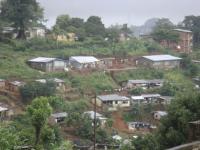 These new views of urbanity in Africa force us to re-equate new paradigms, new urbanism models, as Adjaye proposes, and new forms of intervention in urban areas that take into account the multiplicity and complexity of what occurs in each city and that can only be found and managed locally. This applies both to what occurs in the old city centers – some of their “hearts” still beat – as to their replicas that were born afterwards.
These new views of urbanity in Africa force us to re-equate new paradigms, new urbanism models, as Adjaye proposes, and new forms of intervention in urban areas that take into account the multiplicity and complexity of what occurs in each city and that can only be found and managed locally. This applies both to what occurs in the old city centers – some of their “hearts” still beat – as to their replicas that were born afterwards.
City
07.06.2011 | by Cristina Salvador
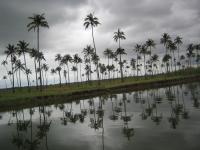 With the same boldness, but in very different conditions, a growing number of non-African youngsters adventure themselves in 21st century Africa. Refusing holiday packages where tourists are locked inside sterilized resorts, foreigners stroll around on their own improvised exploits, prepared with information of the networks and pocket guides. Rucksack on the back, they travel through countries that allow some daring. This way of travelling promotes meeting real people, and not only the crystalline waters or the exotic animals.
With the same boldness, but in very different conditions, a growing number of non-African youngsters adventure themselves in 21st century Africa. Refusing holiday packages where tourists are locked inside sterilized resorts, foreigners stroll around on their own improvised exploits, prepared with information of the networks and pocket guides. Rucksack on the back, they travel through countries that allow some daring. This way of travelling promotes meeting real people, and not only the crystalline waters or the exotic animals.
I'll visit
04.06.2011 | by Nuno Milagre
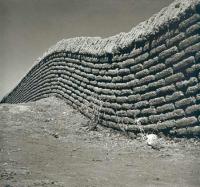 What to do with his secret? He was the first to wake up in the Village, and the only one who would know that the fire was dead. Was the circle broken? Would he be haunted by the spirits of the elders for his negligence of loving nature? And had there been such negligence?
What to do with his secret? He was the first to wake up in the Village, and the only one who would know that the fire was dead. Was the circle broken? Would he be haunted by the spirits of the elders for his negligence of loving nature? And had there been such negligence?
Mukanda
01.06.2011 | by Ondja ki
 David Adjaye, one of the leading architects from his generation, living between London and New York, returned to Lisbon. 'Urban Africa - A Photographic Journey' was the reason why. This exhibition, recently launched at the Black Pavilion of Lisbon City Hall Museum, is a photographic tour but also a retrospective of memories from an architect who never left Africa.
Born in 1966, in Tanzania, from a family of diplomats, he was soon forced to understand the inevitability of travelling, the need to readapt and redefine oneself. Nevertheless, the nomad lifestyle didn’t break his strong relation with the African continent. His work confirms his deep relationship with its landscapes and its places. In Urban Africa (and also in this conversation) David shares his panoramic view of this vast territory and his – spoken – will to live there again.
David Adjaye, one of the leading architects from his generation, living between London and New York, returned to Lisbon. 'Urban Africa - A Photographic Journey' was the reason why. This exhibition, recently launched at the Black Pavilion of Lisbon City Hall Museum, is a photographic tour but also a retrospective of memories from an architect who never left Africa.
Born in 1966, in Tanzania, from a family of diplomats, he was soon forced to understand the inevitability of travelling, the need to readapt and redefine oneself. Nevertheless, the nomad lifestyle didn’t break his strong relation with the African continent. His work confirms his deep relationship with its landscapes and its places. In Urban Africa (and also in this conversation) David shares his panoramic view of this vast territory and his – spoken – will to live there again.
Face to face
01.06.2011 | by Rita Palma
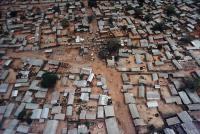 Thoughts around the interview and conference CIUDAD SUR presented by Pablo Brugnoli, last June 26th on “Próximo Futuro”, Gulbenkian Programme for Contemporary Culture. According to Pablo Brugnoli, CIUDAD SUR reviews ideas, practices and projects by collectives of architects and artists, whose recent works reinterpret cities from the southern cone of America (Argentina, Brazil, Chile, and Uruguay). The link between them is their focus on the value of communitarian reconstruction, regarding both the procedures and the socio-cultural dynamics.
Thoughts around the interview and conference CIUDAD SUR presented by Pablo Brugnoli, last June 26th on “Próximo Futuro”, Gulbenkian Programme for Contemporary Culture. According to Pablo Brugnoli, CIUDAD SUR reviews ideas, practices and projects by collectives of architects and artists, whose recent works reinterpret cities from the southern cone of America (Argentina, Brazil, Chile, and Uruguay). The link between them is their focus on the value of communitarian reconstruction, regarding both the procedures and the socio-cultural dynamics.
City
23.05.2011 | by Cristina Salvador
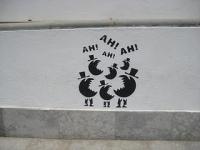 This paper explores Lisbon’s contemporary music scenes within the perspective of music and cultural circulation. It discusses the various ways in which music and cities interact, in a context of increased inter-connectedness between the local and the global. It suggests that music creation and performance (and more broadly, cultural innovation), cannot be reduced to neither grassroots nor institutional initiatives. On the premises of the existence of a so-called “global culture”, cities tend to reinvent themselves by promoting various (and eventually competing) self-definitions. In the case of Lisbon, this tendency is accompanied by a seemingly increased desire to connect (or re-connect) with the Lusophone world, eventually informing Lisbon’s self-images as an inclusive and multicultural city. In this process, new forms of ethnicity may gain visibility in the marketing of Luso-World music (or World music as practiced in the Portuguese-speaking countries). At the horizon of imagined cities as “transcultural megacities”, music tends to gain agency in the promotion of senses of place and belonging in, and to the city.
This paper explores Lisbon’s contemporary music scenes within the perspective of music and cultural circulation. It discusses the various ways in which music and cities interact, in a context of increased inter-connectedness between the local and the global. It suggests that music creation and performance (and more broadly, cultural innovation), cannot be reduced to neither grassroots nor institutional initiatives. On the premises of the existence of a so-called “global culture”, cities tend to reinvent themselves by promoting various (and eventually competing) self-definitions. In the case of Lisbon, this tendency is accompanied by a seemingly increased desire to connect (or re-connect) with the Lusophone world, eventually informing Lisbon’s self-images as an inclusive and multicultural city. In this process, new forms of ethnicity may gain visibility in the marketing of Luso-World music (or World music as practiced in the Portuguese-speaking countries). At the horizon of imagined cities as “transcultural megacities”, music tends to gain agency in the promotion of senses of place and belonging in, and to the city.
City
18.05.2011 | by Jorge de La Barre
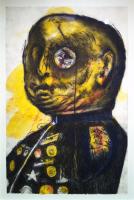 The notion of art as a vehicle for criticism and resistance was taken up in a programmatic manner by the South African group Resistance Art at the end of the nineteen-seventies to the end of confronting institutionalized racism in the then-totalitarian nation. A direct result of the 1976 Soweto uprising and the 1977 murder of the Black Consciousness leader Steve Biko, it represented a “galvanized anti-apartheid activism” in the artistic and cultural spheres. The idea of “culture as a weapon of political struggle,” affirmed by a multiethnic convocation of artists in Botswana in 1982, appears to be the overarching theme of the MOMA’s curators in the exhibition Impressions from South Africa, 1965 to Now, with an eye, perhaps, to those presently fomenting global crises and the sensibilities they must produce in an audience once again attuned to injustice and inequality (Image 1).
The notion of art as a vehicle for criticism and resistance was taken up in a programmatic manner by the South African group Resistance Art at the end of the nineteen-seventies to the end of confronting institutionalized racism in the then-totalitarian nation. A direct result of the 1976 Soweto uprising and the 1977 murder of the Black Consciousness leader Steve Biko, it represented a “galvanized anti-apartheid activism” in the artistic and cultural spheres. The idea of “culture as a weapon of political struggle,” affirmed by a multiethnic convocation of artists in Botswana in 1982, appears to be the overarching theme of the MOMA’s curators in the exhibition Impressions from South Africa, 1965 to Now, with an eye, perhaps, to those presently fomenting global crises and the sensibilities they must produce in an audience once again attuned to injustice and inequality (Image 1).
I'll visit
17.05.2011 | by Beatriz Leal Riesco
 When the Africans discovered that the mato inspired such horror in the Portuguese, they made it their habitual refuge, patiently negotiating from there with the intruders. Queen Njinga, in Angola, played this game to perfection, thus provoking the increasing anger of the Portuguese. Referring to the subterfuges the Portuguese governor opposed to the liberation of her sister, prisoner in Luanda, she wrote on 13 December 1655: “For these and other betrayals I took shelter in the matos, far from my territories” (Cadornega 1972, II: 501). By withdrawing to the forest, the queen was not only obeying a military imperative, but also putting pressure on the Portuguese.
When the Africans discovered that the mato inspired such horror in the Portuguese, they made it their habitual refuge, patiently negotiating from there with the intruders. Queen Njinga, in Angola, played this game to perfection, thus provoking the increasing anger of the Portuguese. Referring to the subterfuges the Portuguese governor opposed to the liberation of her sister, prisoner in Luanda, she wrote on 13 December 1655: “For these and other betrayals I took shelter in the matos, far from my territories” (Cadornega 1972, II: 501). By withdrawing to the forest, the queen was not only obeying a military imperative, but also putting pressure on the Portuguese.
To read
17.05.2011 | by Martín Lienhard
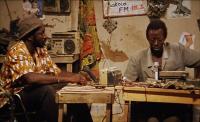 Even today, an analysis of the complex role of music in film is often forgotten by critics, many of whom remain prostrate before the dictatorship of the image. Yet as a manifestation of culture, music has a privileged position with respect to the study of representations of identity and ideology; moreover, in its subversive and dialogic aspects, it can reveal significant directorial decisions related to dynamics of power and exclusion.
Even today, an analysis of the complex role of music in film is often forgotten by critics, many of whom remain prostrate before the dictatorship of the image. Yet as a manifestation of culture, music has a privileged position with respect to the study of representations of identity and ideology; moreover, in its subversive and dialogic aspects, it can reveal significant directorial decisions related to dynamics of power and exclusion.
Afroscreen
16.05.2011 | by Beatriz Leal Riesco
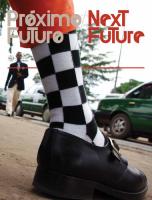 Since the 1960s, there has been great excitement in many African countries with the creation of art schools. Together with the first exhibitions of self-taught artists, there have also been the first festivals of black art, and even the work of African photographers has begun to establish a reputation for itself in Africa, in European countries and in some forums in the USA. The history of these artistic movements is already being written, describing their schools, their leading figures and their international impact.
Since the 1960s, there has been great excitement in many African countries with the creation of art schools. Together with the first exhibitions of self-taught artists, there have also been the first festivals of black art, and even the work of African photographers has begun to establish a reputation for itself in Africa, in European countries and in some forums in the USA. The history of these artistic movements is already being written, describing their schools, their leading figures and their international impact.
To read
11.05.2011 | by António Pinto Ribeiro
 The writer of '20 Navios' speaks to us of the chronicle and its melancholy, opening with “This (rear?) Window”, where he probes his identitary affiliations - the aforementioned triangle-: “From this window before me, when night falls, and Lisbon turns to dust beneath the anonymous city lights, I may imagine myself in Maputo, Havana, or Rio, or whatever other of my stomping grounds, but I know now that I can never fool myself, because I am inevitably alone, with my afro-latin schizophrenia.
The writer of '20 Navios' speaks to us of the chronicle and its melancholy, opening with “This (rear?) Window”, where he probes his identitary affiliations - the aforementioned triangle-: “From this window before me, when night falls, and Lisbon turns to dust beneath the anonymous city lights, I may imagine myself in Maputo, Havana, or Rio, or whatever other of my stomping grounds, but I know now that I can never fool myself, because I am inevitably alone, with my afro-latin schizophrenia.
Afroscreen
07.05.2011 | by Luís Carlos Patraquim